Table of Contents
- How hot is a welding torch?
- Conclusion
Welding torches, the fiery tools at the heart of metalworking, hold immense power within their flames. But have you ever wondered about the incredible heat they generate and the myriad ways it shapes our world. From crafting delicate art pieces to constructing robust structures, the heat produced by these torches drives industries and fuels creativity.
Join us as we delve into the fascinating realm of welding torch heat, uncovering its intensity, versatility, and profound impact across diverse fields. Explore the secrets How hot is a welding torch? It unveils the power behind the flame.
1. What is a welding torch?
A welding torch stands as a fundamental tool in metalworking, wielding the power to fuse metals by generating intense heat. This device serves as a conduit for combining different metals, creating robust and enduring bonds crucial in various industries.
Purpose and Types of Welding Torches
- Functionality: The primary role of a welding torch is to generate sufficient heat to melt metals at their joining points, allowing them to blend seamlessly and form a unified structure.
- Varieties: There exists a diverse array of welding torches tailored for specific tasks and industries. Each type possesses unique features and capabilities to suit various welding needs.
Understanding the foundational role and diverse variations of welding torches is key to comprehending their applications and the profound impact their heat levels have in multiple fields.
How hot is a welding torch?
A welding torch can reach temperatures exceeding thousands of degrees Fahrenheit, generating intense heat necessary to melt metals for welding purposes.
2. Understanding Heat in Welding Torches
Welding torches are fascinating instruments that generate intense heat essential for melting metals and creating strong bonds. Understanding the dynamics of heat in welding torches is fundamental to grasping their operational principles.
Heat Generation in a Welding Torch
The crux of a welding torch lies in its ability to generate the exceedingly high temperatures necessary for metal fusion. This heat is produced through the controlled combustion of gases, typically acetylene, propane, or hydrogen, in combination with oxygen. When these gases combust, the chemical reaction releases an immense amount of heat energy.
Temperature Range and Factors Affecting It
The temperatures achieved by welding torches vary significantly and can reach astonishing levels, often surpassing thousands of degrees Fahrenheit. The temperature range is influenced by several factors:
- Fuel Mixture: Different fuel combinations yield varying levels of heat. For instance, acetylene burns at a higher temperature compared to propane.
- Oxygen Ratio: The proportion of oxygen mixed with the fuel affects the intensity of the flame. A higher oxygen flow can increase the temperature.
- Torch Design: The design and construction of the torch play a pivotal role in heat generation. Some torches are engineered to produce higher temperatures efficiently.
- Regulation and Control: The ability to regulate and control the gas flow and mixture ratios directly impacts the heat output of the torch.
Significance of Temperature Control
While high temperatures are necessary for welding, maintaining precise control over the heat level is critical. Different welding tasks require specific temperature ranges. For instance, delicate welding on thin metals necessitates lower temperatures to prevent material distortion or burning, whereas thicker metals or heavy-duty welding demand higher temperatures for effective bonding.
Importance in Welding Processes
The heat produced by a welding torch directly influences the welding process. It enables the metal pieces to reach the melting point, allowing them to fuse and form a solid joint. However, excessive heat can lead to issues like warping, spattering, or weakened welds, emphasizing the importance of precise temperature management.
Impact of Heat on Material Properties
The heat from a welding torch affects the properties of the materials being welded. Proper heat control ensures that the metal retains its structural integrity, preventing brittleness or other undesirable changes that may compromise the strength of the weld.
3. Measuring the Heat of a Welding Torch
Accurately measuring the temperature generated by a welding torch is essential for ensuring the effectiveness and safety of the welding process. Various tools and methods are employed to gauge the heat output of these powerful instruments.
Tools for Temperature Measurement
- Thermocouples: These devices consist of two dissimilar metal wires joined at one end. When exposed to heat, they produce a voltage that correlates with the temperature, providing a direct measurement.
- Infrared Thermometers: These non-contact devices detect thermal radiation emitted from the heated surface, converting it into temperature readings without physically touching the object.
- Temperature Indicators and Gauges: Some torches come equipped with built-in temperature indicators or gauges that display the heat output directly, simplifying the monitoring process.
Methods Used for Measurement
- Direct Contact Measurement: This method involves physically touching the thermocouple or temperature probe to the surface being welded to measure the heat generated directly.
- Non-Contact Measurement: Infrared thermometers enable measurements from a distance, preventing interference with the welding process and offering a safer way to monitor temperatures.
Different Types of Welding Torches and Their Heat Outputs
Different welding torches have varying heat outputs, which can be classified based on their fuel sources, such as:
- Oxy-Acetylene Torches: Utilizing a mixture of oxygen and acetylene, these torches produce high temperatures suitable for various welding tasks, including cutting.
- MIG and TIG Torches: These torches, used in Metal Inert Gas (MIG) and Tungsten Inert Gas (TIG) welding, operate using different gases like argon or helium, producing heat suitable for precise welding.
- Plasma Torches: Employing a plasma gas, these torches generate extremely high temperatures, making them ideal for cutting and welding thicker metals.
Variances in Heat Outputs
The heat outputs of welding torches are not universal. Factors like the torch’s design, fuel composition, and the specific task being performed influence the temperature range achievable. For instance, while an oxy-acetylene torch can reach temperatures exceeding 6,000 degrees Fahrenheit, a TIG torch might operate in the range of 6,000 to 12,000 degrees Fahrenheit.
The importance of Knowing Heat Outputs
Understanding the heat outputs of different welding torches is crucial for selecting the appropriate tool for a particular welding job. It ensures that the temperature range aligns with the requirements of the materials being welded and the desired outcome.
4. Factors Influencing Heat Intensity
The intensity of heat in a welding torch is a result of various interconnected factors. Understanding and managing these elements are crucial for controlling the temperature output and ensuring optimal welding conditions.
Fuel Types Used in Welding Torches
- Acetylene: Known for its high heat output, acetylene is commonly used in welding due to its ability to generate temperatures surpassing 6,000 degrees Fahrenheit. However, it requires careful handling due to its potential instability when pressurized.
- Propane: Offering a more stable and cost-effective alternative, propane produces lower temperatures compared to acetylene but is sufficient for many welding tasks.
- Hydrogen: This gas can achieve exceptionally high temperatures and is often used in specialized applications requiring extreme heat, such as in some forms of cutting.
Adjustments Affecting Torch Heat
- Gas Flow Rate: Controlling the flow rate of the gases, particularly the ratio of fuel to oxygen, directly impacts the temperature produced by the torch. Increasing the flow rate of oxygen, for instance, intensifies the heat.
- Torch Tip Size: The size of the torch tip affects the concentration of the flame and, consequently, the heat intensity. Larger tips allow for a broader flame, while smaller tips concentrate the heat.
- Distance from Workpiece: Altering the distance between the torch and the workpiece influences the heat transfer. A closer proximity results in more concentrated heat, while a greater distance disperses the heat.
Importance of Fuel and Adjustment Choices
Selecting the appropriate fuel type and making precise adjustments are pivotal for achieving the desired heat levels. The choice depends on the materials being welded, the thickness of the metals, and the specific welding technique employed.
Effect on Welding Efficiency
The right combination of fuel type and adjustments not only ensures the required temperature but also affects the efficiency of the welding process. Proper heat intensity allows for effective penetration, resulting in stronger and more durable welds.
Challenges in Heat Control
Maintaining precise control over heat intensity can be challenging, especially when dealing with different materials or varying thicknesses. Factors like wind, ambient temperature, and the skill level of the welder can also impact heat control.
5. Applications of Various Torch Heat Levels
Different welding tasks demand varying heat levels from welding torches. Understanding the diverse applications of these heat levels is crucial for achieving precise and effective welds across various industries and purposes.
Low vs. High-Temperature Torch Applications
- Low-Temperature Torch Applications:
- Precision Welding: Delicate materials or thin metals require lower temperatures to prevent distortion or damage. This includes tasks like jewelry making or delicate electronic component assembly.
- Tacking and Tack Welds: These initial welds, used to hold pieces together temporarily before the final welding, benefit from lower temperatures to prevent warping or excessive heat exposure.
- High-Temperature Torch Applications:
- Heavy-Duty Welding: Thick metals or heavy structural components necessitate high temperatures to achieve proper fusion and create strong joints, common in construction or shipbuilding.
- Cutting Operations: Welding torches capable of reaching extremely high temperatures are used for cutting metals, where intense heat is required to melt through materials.
Suitability for Different Materials
- Steel and Iron: High-temperature torches are often used for welding steel and iron due to their ability to generate the heat necessary for proper fusion.
- Aluminum and Other Alloys: Lower temperature torches, which can provide precise control, are preferred for welding aluminum and certain alloys to avoid material damage.
Industrial and Artistic Applications
- Industrial Use: Industries such as automotive, aerospace, and manufacturing rely on welding torches with varying heat levels to join metals for structural integrity and durability.
- Artistic and Creative Endeavors: In artistic fields like sculpture or metal artwork, welders utilize different torch heat levels to achieve intricate designs and shapes while ensuring material integrity.
Role in Customization and Versatility
The ability to adjust torch heat levels allows welders to customize their work, adapting to different materials, thicknesses, and welding techniques. This versatility is crucial for achieving precise and tailored welding results.
6. Safety Measures Around High Temperatures
Working with welding torches, especially at high temperatures, demands strict adherence to safety protocols and the utilization of protective measures to ensure the well-being of the welder and those in the vicinity.
Importance of Safety Precautions
- Heat-Related Hazards: The high temperatures generated by welding torches pose several risks, including burns, fires, and exposure to harmful fumes or gases, making safety measures imperative.
- Protecting Against Burns: Direct contact with the torch flame or hot metal can cause severe burns. Proper protective gear is essential to prevent skin exposure.
Essential Protective Gear
- Welding Helmets: These helmets shield the face and eyes from intense light, sparks, and debris, providing essential protection against eye injuries and UV radiation.
- Fire-Resistant Clothing: Wearing flame-resistant jackets, pants, and gloves safeguards against burns caused by accidental contact with hot surfaces or flames.
- Respiratory Protection: Using respirators or masks equipped with filters is crucial to prevent inhalation of harmful fumes or gases produced during welding.
Safe Working Practices
- Ventilation: Ensuring adequate ventilation in the welding area helps dissipate fumes and gases, reducing the risk of respiratory issues or exposure to hazardous substances.
- Proper Training and Technique: Adequate training in handling welding equipment and employing proper techniques minimizes the likelihood of accidents caused by mishandling.
Precautions Against Arc Flash and Eye Injuries
- Eye Protection: Welders must use appropriate shaded lenses or auto-darkening helmets to shield their eyes from the intense light emitted during welding, preventing arc flashes and potential eye damage.
- Avoiding Direct Exposure: Avoiding direct exposure to the welding arc and its intense light is crucial to prevent arc flashes, which can cause severe eye injuries.
Regular Equipment Inspection and Maintenance
- Checking Equipment: Regular inspection of welding torches and associated equipment ensures their proper functioning, reducing the risk of malfunctions that could lead to accidents.
- Maintenance Practices: Proper cleaning, lubrication, and maintenance of welding equipment prolong its lifespan and ensure safe and efficient operation.
Innovations in Welding Torch Technology
Advancements in technology have revolutionized welding torches, introducing innovative features that enhance heat control, efficiency, and safety measures. These innovations have significantly transformed the welding landscape, offering improved capabilities and functionalities.
Enhanced Heat Control Features
- Temperature Regulation Systems: Modern welding torches incorporate sophisticated temperature regulation systems that allow welders to precisely control heat levels. These systems enable adjustments in real-time, optimizing the welding process.
- Variable Power Settings: Some torches come equipped with adjustable power settings, allowing welders to customize the heat output according to the specific requirements of the welding task.
Ergonomic Designs and Comfort
- Improved Handle Designs: Ergonomically designed handles reduce fatigue and strain on the welder’s hands, promoting better comfort and control during prolonged welding sessions.
- Weight and Balance: Innovative torch designs focus on achieving optimal weight distribution, ensuring balance and ease of handling for enhanced maneuverability.
Technological Integration for Efficiency
- Digital Interfaces: Advanced welding torches feature digital interfaces that provide real-time data, such as temperature readings, gas flow rates, and power settings, facilitating precise control and monitoring.
- Automation and Robotics: Integration of welding torches with automated systems and robotics enhances efficiency and precision in industrial settings, reducing human intervention and improving output consistency.
Safety Enhancements
- Built-in Safety Features: Many modern torches are equipped with built-in safety mechanisms that automatically shut down or regulate the torch in case of overheating or gas leaks, ensuring enhanced safety for the welder and surroundings.
- Improved Ventilation Systems: Some torch designs incorporate improved ventilation systems that efficiently manage fumes and gases generated during welding, enhancing the overall safety of the working environment.
Energy-Efficient Technologies
- Energy-Saving Designs: Innovations in welding torch technology focus on energy-efficient designs, reducing power consumption without compromising performance, resulting in cost savings and environmental benefits.
- Green Technologies: Emerging torches integrate eco-friendly fuel options and technologies that minimize carbon emissions, aligning with sustainable welding practices.
7. Real-life Examples and Use Cases
Welding torches find extensive applications across diverse industries, showcasing their versatility and indispensable role in various real-life scenarios. Understanding these practical applications sheds light on the breadth of their usage and the critical role they play in different fields.
Industrial Applications
- Automotive Industry: Welding torches are pivotal in the automotive sector for joining components, fabricating frames, and assembling various parts, ensuring the structural integrity of vehicles.
- Aerospace and Aviation: Precise and high-quality welds produced by advanced torches are crucial in aerospace manufacturing for building aircraft components, ensuring safety and durability.
- Construction and Infrastructure: From welding structural steel beams to creating secure joints in pipelines, welding torches play a vital role in constructing buildings, bridges, and infrastructure.
Creative and Artistic Endeavors
- Metal Artwork: Welding torches enable artists to craft intricate metal sculptures, furniture, and installations, showcasing creativity while leveraging the torch’s heat for shaping and joining metals.
- Custom Fabrication: Customized metal fabrications for interior designs, signage, and architectural elements are achieved through skilled welding techniques, showcasing the torch’s adaptability.
Repair and Maintenance
- Industrial Maintenance: Welding torches are instrumental in repair and maintenance tasks across industries, from fixing machinery components to patching metal surfaces and extending equipment lifespan.
- Home and DIY Repairs: Torch-based welding is utilized in DIY projects for repairing metal structures, fences, or automotive parts, showcasing the torch’s accessibility in smaller-scale applications.
Conclusion
In conclusion, the searing heat generated by welding torches, soaring to thousands of degrees, is the fiery backbone of metal fusion. Understanding this intense heat unveils the core of welding’s transformative power.
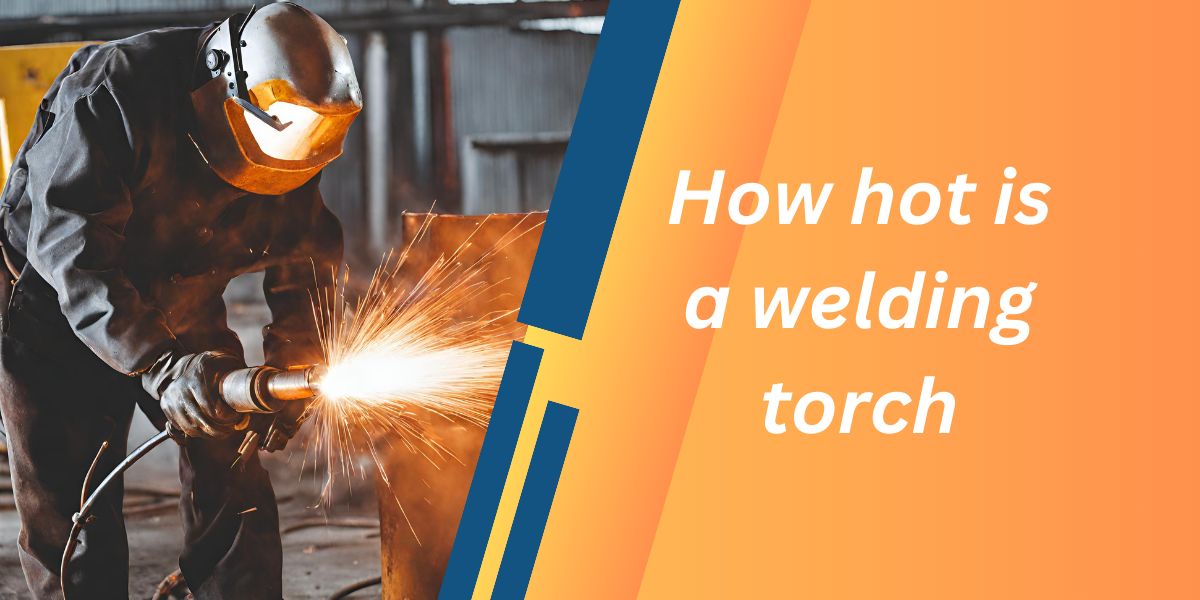
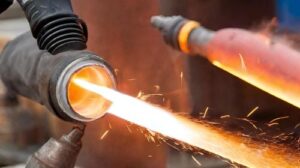
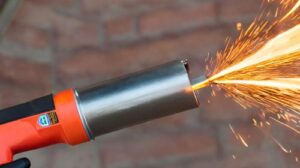
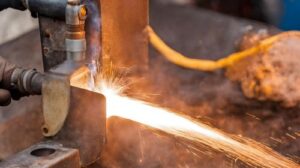
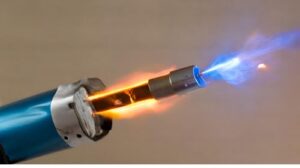
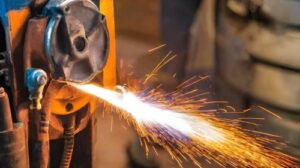
3 thoughts on “How Hot is a Welding torch?”